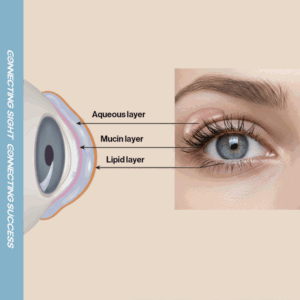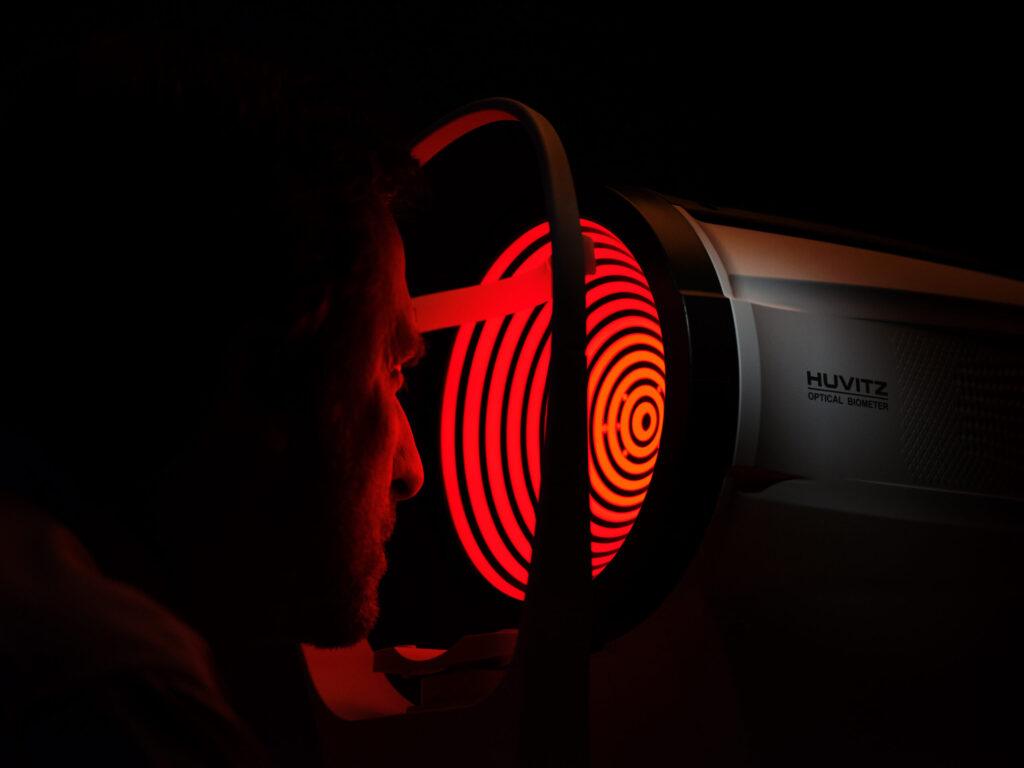Dry Eye Syndrome on the Rise,
We Explain Its Causes and Prevention

In recent days, the number of people complaining of dry eye symptoms has been noticeably increasing.
In particular, as more people spend the entire day in front of digital screens at the office or work in environments with dry indoor air, cases of people saying “my eyes feel dry,” “they look red,” or “my vision feels blurry” have been steadily rising.
Dry eye syndrome is defined as a condition caused by the combined effects of tear film instability and damage to the surface of the eye. Its incidence increases with age and with longer screen time, and lifestyle changes in the digital era are considered one of the main causes.
Therefore, dry eye syndrome should be recognized not as simple fatigue but as a warning sign for eye health, requiring proper care and prevention.
Causes of Dry Eye Syndrome : It occurs when the balance of the tear film is disrupted

Tears that protect our eyes are composed of three layers: the aqueous layer (water), the mucin layer (mucus), and the lipid layer (oil). When the balance among these three components is disrupted, the eyes cannot be properly protected, leading to the development of dry eye syndrome.
Dry eye syndrome does not occur only because of a lack of tears; it can also develop when tears evaporate excessively. In other words, it is a condition that arises when both the production and maintenance of tears do not function properly.
√ Aqueous-deficient
– A decrease in tear volume due to reduced lacrimal gland function, aging, or hormonal changes
– Commonly occurs with aging and hormonal changes, especially in post-menopausal women
√ Evaporative type
– Rapid tear evaporation due to a lack of the lipid layer in the tear film
– Frequently occurs with prolonged screen use, meibomian gland dysfunction, or long-term contact lens wear
Such dry eye syndrome can also be aggravated by living environments and daily habits.
– Reduced blinking frequency due to increased use of digital devices
– Dry indoor air caused by heaters or air conditioners
– External irritants such as fine dust and yellow dust
– Effects from certain medications or inflammation in the eyes
Main Symptoms of Dry Eye Syndrome : When your eyes feel tired, never ignore it

Dry eye syndrome is not just an uncomfortable feeling of “dryness,” but can lead to various symptoms such as blurred vision, redness, and eye fatigue. When the tear film becomes unstable, the surface of the eye is stimulated, which can develop into inflammation or decreased vision.
< Representative Symptoms >
– Stinging or burning sensation in the eyes
– Feeling of a foreign body, like sand
– Frequent redness
– Frequent eye crust
– Blurred vision and unstable focus
– Excessive tearing (reflex tears)
If these symptoms occur repeatedly, it is likely an early sign of dry eye syndrome rather than just fatigue or environmental factors.
Diagnosis of Dry Eye Syndrome : Accurate examination is the first step toward treatment
If discomfort in the eyes occurs repeatedly, it is important to receive an accurate diagnosis through an eye examination. The condition of the eye surface and the function of the tear film should be precisely evaluated using specialized equipment.
< Representative Diagnostic Tests >
– Tear secretion evaluation : Checks the amount of tear production
– Tear film stability (TBUT) test : Measures the duration of tear film stability
– Meibomian gland function analysis : Evaluates the function of the meibomian glands
– Tear film distribution and pattern evaluation : Assesses the uniformity of the tear film
– Blink interval measurement : Determines the frequency of blinking
– Corneal and conjunctival redness assessment : Evaluates the presence of inflammation or irritation
– OSDI self-diagnosis questionnaire : Measures the awareness and discomfort level of symptoms
Through these tests, it is possible to determine whether the eyes produce insufficient tears, whether the tears evaporate too quickly, or whether both factors are involved.
Based on the test results, it is important to find treatment and management methods that best suit the condition of your eyes.
Prevention of Dry Eye Syndrome : Try to prevent it in your daily life

Even small changes in daily habits can greatly help prevent dry eye syndrome. By adjusting your living environment and eye usage habits, you can maintain the balance of the tear film and prevent the worsening of symptoms.
< Prevention Tips >
– Maintain indoor humidity : Use a humidifier and adjust the direction of air flow
– Follow the 20-20-20 rule : Every 20 minutes, look at a different place about 6 meters (20 feet) away for 20 seconds.
– Get enough rest and hydration : Relieve eye fatigue and drink 1.5–2 liters of water per day
– Control contact lens wear time : Avoid prolonged use and switch to glasses when possible
– Have regular eye examinations : Periodically check the condition of the tear film and eye surface
Do not ignore the signals of dry eye syndrome. Dry eye syndrome is not just a sign of fatigue but a signal from your eyes about their health. Especially for those who frequently use digital devices or are often exposed to dry environments, more careful management is needed. If symptoms persist, do not delay and visit an eye specialist for an accurate diagnosis.



